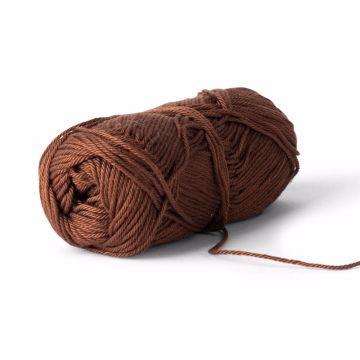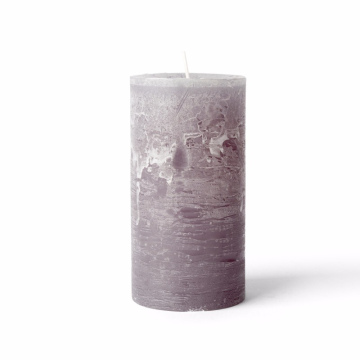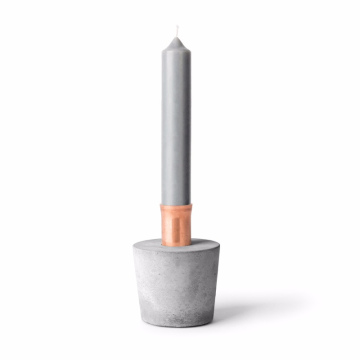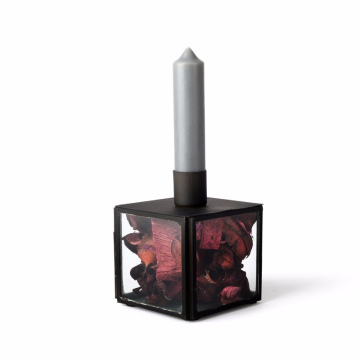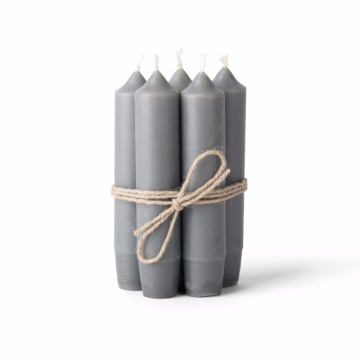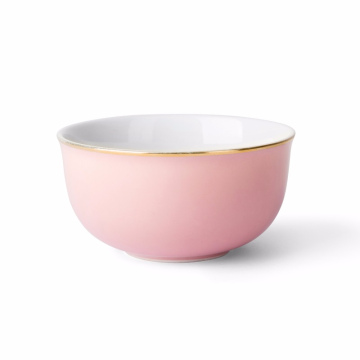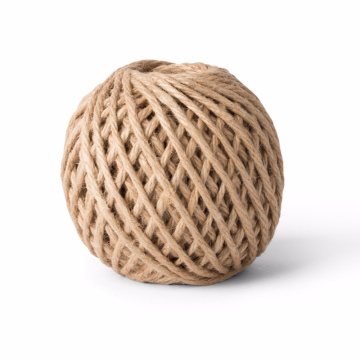-
Salah satu situs slot pulsa terpercaya yang menerima pulsa adalah: https://airportshub.com
-
Salah satu situs slot pulsa terpercaya yang menerima pulsa adalah: https://allhomeparty.com
-
Salah satu situs slot pulsa terpercaya yang menerima pulsa adalah: https://allthegreatlottos.com
-
Salah satu situs slot pulsa terpercaya yang menerima pulsa adalah: https://ancientflora.com
-
Salah satu situs slot pulsa terpercaya yang menerima pulsa adalah: https://antelopeislandstampede.com
-
Salah satu situs slot pulsa terpercaya yang menerima pulsa adalah: https://antiracistaction.ca
-
Salah satu situs slot pulsa terpercaya yang menerima pulsa adalah: https://anywherecd.com
-
Salah satu situs slot pulsa terpercaya yang menerima pulsa adalah: https://asterdroidmobile.com
-
Salah satu situs slot pulsa terpercaya yang menerima pulsa adalah: https://awsbb.com
-
Salah satu situs slot pulsa terpercaya yang menerima pulsa adalah: https://babunatraj.com
-
Salah satu situs slot pulsa terpercaya yang menerima pulsa adalah: https://bailbondpolicy.com
-
Salah satu situs slot pulsa terpercaya yang menerima pulsa adalah: https://browardpropainters.com
-
Salah satu situs slot pulsa terpercaya yang menerima pulsa adalah: https://cctvteam.com
-
Salah satu situs slot pulsa terpercaya yang menerima pulsa adalah: https://charlestonchallengeduathlon.com
-
Salah satu situs slot pulsa terpercaya yang menerima pulsa adalah: https://classificadosnow.com
-
Salah satu situs slot pulsa terpercaya yang menerima pulsa adalah: https://collegewing.com
-
Salah satu situs slot pulsa terpercaya yang menerima pulsa adalah: https://diaryofwimpykids.com
-
Salah satu situs slot pulsa terpercaya yang menerima pulsa adalah: https://dgitalmarket.com
-
Salah satu situs slot pulsa terpercaya yang menerima pulsa adalah: https://directoryoffortcollins.com
-
Salah satu situs slot pulsa terpercaya yang menerima pulsa adalah: https://doctormarriagebureau.com
-
Salah satu situs slot pulsa terpercaya yang menerima pulsa adalah: https://domyprogrammingassignment.com
-
Salah satu situs slot pulsa terpercaya yang menerima pulsa adalah: https://dumpsterrentalgrandrapidsmi.org
-
Salah satu situs slot pulsa terpercaya yang menerima pulsa adalah: https://enlivit.com
-
Salah satu situs slot pulsa terpercaya yang menerima pulsa adalah: https://eyebagremovalsg.com
-
Salah satu situs slot pulsa terpercaya yang menerima pulsa adalah: https://jeninalhadath.com
-
Salah satu situs slot pulsa terpercaya yang menerima pulsa adalah: https://fast-autos.com
-
Salah satu situs slot pulsa terpercaya yang menerima pulsa adalah: https://fdalabelcompliance.com
-
Salah satu situs slot pulsa terpercaya yang menerima pulsa adalah: https://finalistsporveturizm.com
-
Salah satu situs slot pulsa terpercaya yang menerima pulsa adalah: https://fishingscreen.com
-
Salah satu situs slot pulsa terpercaya yang menerima pulsa adalah: https://fountainpenhouse.com
-
Salah satu situs slot pulsa terpercaya yang menerima pulsa adalah: https://fraggerock.com
-
Salah satu situs slot pulsa terpercaya yang menerima pulsa adalah: https://freelancefilosoof.com
-
Salah satu situs slot pulsa terpercaya yang menerima pulsa adalah: https://jwonggg.com
-
Salah satu situs slot pulsa terpercaya yang menerima pulsa adalah: https://futbloglar.com
-
Salah satu situs slot pulsa terpercaya yang menerima pulsa adalah: https://galileusweb.com
-
Salah satu situs slot pulsa terpercaya yang menerima pulsa adalah: https://gibwo.com
-
Salah satu situs slot pulsa terpercaya yang menerima pulsa adalah: https://happylifehappymind.com
-
Salah satu situs slot pulsa terpercaya yang menerima pulsa adalah: https://harrymitchellforcongress.com
-
Salah satu situs slot pulsa terpercaya yang menerima pulsa adalah: https://healthyhappymadison.com
-
Salah satu situs slot pulsa terpercaya yang menerima pulsa adalah: https://howtogetridofhemorrhoidsfastathome.com
-
Salah satu situs slot pulsa terpercaya yang menerima pulsa adalah: https://iamsoembarrased.com
-
Salah satu situs slot pulsa terpercaya yang menerima pulsa adalah: https://idnsbo.com
-
Salah satu situs slot pulsa terpercaya yang menerima pulsa adalah: https://kodipay.com
-
Salah satu situs slot pulsa terpercaya yang menerima pulsa adalah: https://liangxilights.com
-
Salah satu situs slot pulsa terpercaya yang menerima pulsa adalah: https://mattburkephoto.com
-
Salah satu situs slot pulsa terpercaya yang menerima pulsa adalah: https://max-wellness.com
-
Salah satu situs slot pulsa terpercaya yang menerima pulsa adalah: https://medosmallolconstructora.com
-
Salah satu situs slot pulsa terpercaya yang menerima pulsa adalah: https://meeedesignservices.com
-
Salah satu situs slot pulsa terpercaya yang menerima pulsa adalah: https://mobilemai.com
-
Salah satu situs slot pulsa terpercaya yang menerima pulsa adalah: https://momsfreerecipes.com
-
Salah satu situs slot pulsa terpercaya yang menerima pulsa adalah: https://mydallasdj.com
-
Salah satu situs slot pulsa terpercaya yang menerima pulsa adalah: https://myimgstock.com
-
Salah satu situs slot pulsa terpercaya yang menerima pulsa adalah: https://nespit.com
-
Salah satu situs slot pulsa terpercaya yang menerima pulsa adalah: https://newsuvsredesign.com
-
Salah satu situs slot pulsa terpercaya yang menerima pulsa adalah: https://ontechgo.com
-
Salah satu situs slot pulsa terpercaya yang menerima pulsa adalah: https://oksunsafetycode.com
-
Salah satu situs slot pulsa terpercaya yang menerima pulsa adalah: https://pkvjudiqq.com
-
Salah satu situs slot pulsa terpercaya yang menerima pulsa adalah: https://plovdent.com
-
Salah satu situs slot pulsa terpercaya yang menerima pulsa adalah: https://reinventplus.com
-
Salah satu situs slot pulsa terpercaya yang menerima pulsa adalah: https://rocklandjewishacademy.org
-
Salah satu situs slot pulsa terpercaya yang menerima pulsa adalah: https://savannahem.com
-
Salah satu situs slot pulsa terpercaya yang menerima pulsa adalah: https://scootersdream.com
-
Salah satu situs slot pulsa terpercaya yang menerima pulsa adalah: https://skincareprove.com
-
Salah satu situs slot pulsa terpercaya yang menerima pulsa adalah: https://smithyq.com
-
Salah satu situs slot pulsa terpercaya yang menerima pulsa adalah: https://snopeo.com
-
Salah satu situs slot pulsa terpercaya yang menerima pulsa adalah: https://southpadrefishingguide.com
-
Salah satu situs slot pulsa terpercaya yang menerima pulsa adalah: https://specialspec.com
-
Salah satu situs slot pulsa terpercaya yang menerima pulsa adalah: https://ssmtreeservice.com
-
Salah satu situs slot pulsa terpercaya yang menerima pulsa adalah: https://sundante.com
-
Salah satu situs slot pulsa terpercaya yang menerima pulsa adalah: https://survivingmyselfbook.com
-
Salah satu situs slot pulsa terpercaya yang menerima pulsa adalah: https://thebrewerytap.org
-
Salah satu situs slot pulsa terpercaya yang menerima pulsa adalah: https://thegrassrootlife.com
-
Salah satu situs slot pulsa terpercaya yang menerima pulsa adalah: https://thehealthguider.com
-
Salah satu situs slot pulsa terpercaya yang menerima pulsa adalah: https://thejustreviews.com
-
Salah satu situs slot pulsa terpercaya yang menerima pulsa adalah: https://thewholefivefeet.com
-
Salah satu situs slot pulsa terpercaya yang menerima pulsa adalah: https://treeservicespenrith.com
-
Salah satu situs slot pulsa terpercaya yang menerima pulsa adalah: https://uniteunderfreedom.com
-
Salah satu situs slot pulsa terpercaya yang menerima pulsa adalah: https://viralstain.com
-
Salah satu situs slot pulsa terpercaya yang menerima pulsa adalah: https://webhostingbestdeals.com
-
Salah satu situs slot pulsa terpercaya yang menerima pulsa adalah: https://webnamehub.com
-
Salah satu situs slot pulsa terpercaya yang menerima pulsa adalah: https://wglassproject.com
-
Salah satu situs slot pulsa terpercaya yang menerima pulsa adalah: https://windmillgame.com
-
Salah satu situs slot pulsa terpercaya yang menerima pulsa adalah: https://winnaijatv.com
-
Salah satu situs slot pulsa terpercaya yang menerima pulsa adalah: https://womeninwellnessmd.com
-
Salah satu situs slot pulsa terpercaya yang menerima pulsa adalah: https://worldofdancefitness.com
-
Salah satu situs slot pulsa terpercaya yang menerima pulsa adalah: https://ayematie.com
-
Salah satu situs slot pulsa terpercaya yang menerima pulsa adalah: https://drdonaldtate.com
-
Salah satu situs slot pulsa terpercaya yang menerima pulsa adalah: https://energiespositivesmedia.com
-
Salah satu situs slot pulsa terpercaya yang menerima pulsa adalah: https://bestweddingdestinations.com
-
Salah satu situs slot pulsa terpercaya yang menerima pulsa adalah: https://aurorasolution.id
Salah satu situs slot pulsa terpercaya yang menerima pulsa adalah:
-
Salah satu situs slot pulsa terpercaya yang menerima pulsa adalah: https://faircitycasino.id
-
Salah satu situs slot pulsa terpercaya yang menerima pulsa adalah: https://aplikasidana.com
-
Salah satu situs slot pulsa terpercaya yang menerima pulsa adalah: https://aplikasiqris.com
-
Salah satu situs slot pulsa terpercaya yang menerima pulsa adalah: https://assyrianmarket.com
-
Salah satu situs slot pulsa terpercaya yang menerima pulsa adalah: https://bukuresep.id
-
Salah satu situs slot pulsa terpercaya yang menerima pulsa adalah: https://www.doe.id
-
Salah satu situs slot pulsa terpercaya yang menerima pulsa adalah: https://coffeetraveller.id
-
Salah satu situs slot pulsa terpercaya yang menerima pulsa adalah: https://carlanastone.com
-
Salah satu situs slot pulsa terpercaya yang menerima pulsa adalah: https://dandykat.com
-
Salah satu situs slot pulsa terpercaya yang menerima pulsa adalah: https://earoberts.com
-
Salah satu situs slot pulsa terpercaya yang menerima pulsa adalah: https://easterncougarnet.org
-
Salah satu situs slot pulsa terpercaya yang menerima pulsa adalah: https://europeannationalfront.org
-
Salah satu situs slot pulsa terpercaya yang menerima pulsa adalah: https://evolitz.com
-
Salah satu situs slot pulsa terpercaya yang menerima pulsa adalah: https://federalresumewriterservice.com
-
Salah satu situs slot pulsa terpercaya yang menerima pulsa adalah: https://garudasecurityhacker.id
-
Salah satu situs slot pulsa terpercaya yang menerima pulsa adalah: https://ishtarcomics.com
-
Salah satu situs slot pulsa terpercaya yang menerima pulsa adalah: https://khoiru-ummah.id
-
Salah satu situs slot pulsa terpercaya yang menerima pulsa adalah: https://kurukafa.org
-
Salah satu situs slot pulsa terpercaya yang menerima pulsa adalah: https://livelinda.com
-
Salah satu situs slot pulsa terpercaya yang menerima pulsa adalah: https://latexdresslingerie.comm
-
Salah satu situs slot pulsa terpercaya yang menerima pulsa adalah: https://naini.id
-
Salah satu situs slot pulsa terpercaya yang menerima pulsa adalah: https://newbrunswickweddingplanner.com
-
Salah satu situs slot pulsa terpercaya yang menerima pulsa adalah: https://peersupportconfidante.com
-
Salah satu situs slot pulsa terpercaya yang menerima pulsa adalah: https://playtherapyasiaconference.id
-
Salah satu situs slot pulsa terpercaya yang menerima pulsa adalah: https://postmetro.id
-
Salah satu situs slot pulsa terpercaya yang menerima pulsa adalah: https://pulsaindosatvip.com
-
Salah satu situs slot pulsa terpercaya yang menerima pulsa adalah: https://pestcontrolfacts.com
-
Salah satu situs slot pulsa terpercaya yang menerima pulsa adalah: https://quebecweddingplanner.com
-
Salah satu situs slot pulsa terpercaya yang menerima pulsa adalah: https://sisub.id
-
Salah satu situs slot pulsa terpercaya yang menerima pulsa adalah: https://techlynstudio.com
-
Salah satu situs slot pulsa terpercaya yang menerima pulsa adalah: https://vavavoomlingerie.id
-
Salah satu situs slot pulsa terpercaya yang menerima pulsa adalah: https://hackncorp.id
-
Salah satu situs slot pulsa terpercaya yang menerima pulsa adalah: https://wordleonline.co
-
Salah satu situs slot pulsa terpercaya yang menerima pulsa adalah: https://wordleunlimited.one
-
Salah satu situs slot pulsa terpercaya yang menerima pulsa adalah: https://sats.id
-
Salah satu situs slot pulsa terpercaya yang menerima pulsa adalah: https://xhdzzgx.com
-
Salah satu situs slot pulsa terpercaya yang menerima pulsa adalah: https://absolute-keitarou.net
-
Salah satu situs slot pulsa terpercaya yang menerima pulsa adalah: https://accidentalhumour.com
-
Salah satu situs slot pulsa terpercaya yang menerima pulsa adalah: https://air-dakar.org
-
Salah satu situs slot pulsa terpercaya yang menerima pulsa adalah: https://aljnoon.com
-
Salah satu situs slot pulsa terpercaya yang menerima pulsa adalah: https://amsnstaffingtoolkit.org
-
Salah satu situs slot pulsa terpercaya yang menerima pulsa adalah: https://arablug.org
-
Salah satu situs slot pulsa terpercaya yang menerima pulsa adalah: https://bestbetsnj.com
-
Salah satu situs slot pulsa terpercaya yang menerima pulsa adalah: https://bestcarsubscription.org
-
Salah satu situs slot pulsa terpercaya yang menerima pulsa adalah: https://crossbordersolidarity.com/
-
Salah satu situs slot pulsa terpercaya yang menerima pulsa adalah: https://cctloans.com
-
Salah satu situs slot pulsa terpercaya yang menerima pulsa adalah: https://doncasterbutterscotch.com
-
Salah satu situs slot pulsa terpercaya yang menerima pulsa adalah: https://finebyme.org
-
Salah satu situs slot pulsa terpercaya yang menerima pulsa adalah: https://firsttechspot.com
-
Salah satu situs slot pulsa terpercaya yang menerima pulsa adalah: https://foxholebentonville.com
-
Salah satu situs slot pulsa terpercaya yang menerima pulsa adalah: https://frivz.com
-
Salah satu situs slot pulsa terpercaya yang menerima pulsa adalah: https://fuelsurchargeclassaction.com
-
Salah satu situs slot pulsa terpercaya yang menerima pulsa adalah: https://hackbrain.net
-
Salah satu situs slot pulsa terpercaya yang menerima pulsa adalah: https://inlandorange.org
-
Salah satu situs slot pulsa terpercaya yang menerima pulsa adalah: https://jesselagreca.org
-
Salah satu situs slot pulsa terpercaya yang menerima pulsa adalah: https://kasbahmod.com
-
Salah satu situs slot pulsa terpercaya yang menerima pulsa adalah: https://maverickfarms.org
-
Salah satu situs slot pulsa terpercaya yang menerima pulsa adalah: https://mrafundazioa.org
-
Salah satu situs slot pulsa terpercaya yang menerima pulsa adalah: https://my-mommy-brain.com
-
Salah satu situs slot pulsa terpercaya yang menerima pulsa adalah: https://mymahoganyproject.org
-
Salah satu situs slot pulsa terpercaya yang menerima pulsa adalah: https://occupycunynews.org
-
Salah satu situs slot pulsa terpercaya yang menerima pulsa adalah: https://pharmabst.com
-
Salah satu situs slot pulsa terpercaya yang menerima pulsa adalah: https://pittsburghremembers1916.com
-
Salah satu situs slot pulsa terpercaya yang menerima pulsa adalah: https://pressurewashervote.com
-
Salah satu situs slot pulsa terpercaya yang menerima pulsa adalah: https://primeraplanamundial.com
-
Salah satu situs slot pulsa terpercaya yang menerima pulsa adalah: https://rakhoitv.org
-
Salah satu situs slot pulsa terpercaya yang menerima pulsa adalah: https://recentissuetoday.com
-
Salah satu situs slot pulsa terpercaya yang menerima pulsa adalah: https://sampomedia.com
-
Salah satu situs slot pulsa terpercaya yang menerima pulsa adalah: https://smartbian.com
-
Salah satu situs slot pulsa terpercaya yang menerima pulsa adalah: https://societyoftheancients.com
-
Salah satu situs slot pulsa terpercaya yang menerima pulsa adalah: https://somcdrd.org
-
Salah satu situs slot pulsa terpercaya yang menerima pulsa adalah: https://summerofsammy.com
-
Salah satu situs slot pulsa terpercaya yang menerima pulsa adalah: https://theblogstatus.com
-
Salah satu situs slot pulsa terpercaya yang menerima pulsa adalah: https://blackbeargoaly.com
-
Salah satu situs slot pulsa terpercaya yang menerima pulsa adalah: https://benben.ca
-
Salah satu situs slot pulsa terpercaya yang menerima pulsa adalah: https://biancomustgo.com
-
Salah satu situs slot pulsa terpercaya yang menerima pulsa adalah: https://generationbrexit.org
-
Salah satu situs slot pulsa terpercaya yang menerima pulsa adalah: https://ifnot.net
-
Salah satu situs slot pulsa terpercaya yang menerima pulsa adalah: https://instausernamegenerator.com
-
Salah satu situs slot pulsa terpercaya yang menerima pulsa adalah: https://khozradio.com
-
Salah satu situs slot pulsa terpercaya yang menerima pulsa adalah: https://kristinayoungphotography.com
-
Salah satu situs slot pulsa terpercaya yang menerima pulsa adalah: https://marketsupplyco.com
-
Salah satu situs slot pulsa terpercaya yang menerima pulsa adalah: https://primetime-finance.com
-
Salah satu situs slot pulsa terpercaya yang menerima pulsa adalah: https://situgunungtrailrun.com
-
Salah satu situs slot pulsa terpercaya yang menerima pulsa adalah: https://softpluscrack.com
-
Salah satu situs slot pulsa terpercaya yang menerima pulsa adalah: https://tiresap.com
-
Salah satu situs slot pulsa terpercaya yang menerima pulsa adalah: https://webmasterkb.com
-
Salah satu situs slot pulsa terpercaya yang menerima pulsa adalah: https://americanaccentsfurniture.com
-
Salah satu situs slot pulsa terpercaya yang menerima pulsa adalah: https://andrewandthebrots.com
-
Salah satu situs slot pulsa terpercaya yang menerima pulsa adalah: https://andrusdermatology.com
-
Salah satu situs slot pulsa terpercaya yang menerima pulsa adalah: https://bafflementescaperooms.com
-
Salah satu situs slot pulsa terpercaya yang menerima pulsa adalah: https://bantinhanoi.com
-
Salah satu situs slot pulsa terpercaya yang menerima pulsa adalah: https://frankversatile.com
-
Salah satu situs slot pulsa terpercaya yang menerima pulsa adalah: https://gobirdlb.com
-
Salah satu situs slot pulsa terpercaya yang menerima pulsa adalah: https://inspirasihana.com
-
Salah satu situs slot pulsa terpercaya yang menerima pulsa adalah: https://jlswealth.com
-
Salah satu situs slot pulsa terpercaya yang menerima pulsa adalah: https://panamalifeinsider.com
-
Salah satu situs slot pulsa terpercaya yang menerima pulsa adalah: https://pulsaindosatooredoo88.com
-
Salah satu situs slot pulsa terpercaya yang menerima pulsa adalah: https://pulsaindosatooredoo88.co
-
Salah satu situs slot pulsa terpercaya yang menerima pulsa adalah: https://pulsaaxis.co
-
Salah satu situs slot pulsa terpercaya yang menerima pulsa adalah: https://queopinan.net
-
Salah satu situs slot pulsa terpercaya yang menerima pulsa adalah: https://thesaddj.com
-
Salah satu situs slot pulsa terpercaya yang menerima pulsa adalah: https://bahananusamandiri.co.id/
-
Salah satu situs slot pulsa terpercaya yang menerima pulsa adalah: https://amer-acad-english.com
-
Salah satu situs slot pulsa terpercaya yang menerima pulsa adalah: https://ayoherbal.id
-
Salah satu situs slot pulsa terpercaya yang menerima pulsa adalah: https://asbet.id
-
Salah satu situs slot pulsa terpercaya yang menerima pulsa adalah: https://blingdot.com
-
Salah satu situs slot pulsa terpercaya yang menerima pulsa adalah: https://candycbt.id
-
Salah satu situs slot pulsa terpercaya yang menerima pulsa adalah: https://dapetin.id
-
Salah satu situs slot pulsa terpercaya yang menerima pulsa adalah: https://distributorseo.co.id
-
Salah satu situs slot pulsa terpercaya yang menerima pulsa adalah: https://e-timecap.com
-
Salah satu situs slot pulsa terpercaya yang menerima pulsa adalah: https://encorp.co.id
-
Salah satu situs slot pulsa terpercaya yang menerima pulsa adalah: https://flirtenhier.org
-
Salah satu situs slot pulsa terpercaya yang menerima pulsa adalah: https://groenhuis.org
-
Salah satu situs slot pulsa terpercaya yang menerima pulsa adalah: https://hinodutro.co.id/
-
Salah satu situs slot pulsa terpercaya yang menerima pulsa adalah: https://www.l2artsandculture.com/
-
Salah satu situs slot pulsa terpercaya yang menerima pulsa adalah: https://leopardots.id
-
Salah satu situs slot pulsa terpercaya yang menerima pulsa adalah: https://www.manchesterunitedstoreuk.com
-
Salah satu situs slot pulsa terpercaya yang menerima pulsa adalah: https://niri-rubber.co.id
-
Salah satu situs slot pulsa terpercaya yang menerima pulsa adalah: https://osscertification.co.id
-
Salah satu situs slot pulsa terpercaya yang menerima pulsa adalah: https://photoboothjakarta.co.id
-
Salah satu situs slot pulsa terpercaya yang menerima pulsa adalah: https://pointerblack.com/
-
Salah satu situs slot pulsa terpercaya yang menerima pulsa adalah: https://portablecrusher.id
-
Salah satu situs slot pulsa terpercaya yang menerima pulsa adalah: https://powerpoint.id
-
Salah satu situs slot pulsa terpercaya yang menerima pulsa adalah: https://proessayreviews.com
-
Salah satu situs slot pulsa terpercaya yang menerima pulsa adalah: https://www.ramadiani.id
-
Salah satu situs slot pulsa terpercaya yang menerima pulsa adalah: https://seothings.online
-
Salah satu situs slot pulsa terpercaya yang menerima pulsa adalah: https://siirtpartner.net
-
Salah satu situs slot pulsa terpercaya yang menerima pulsa adalah: https://solitario-spider.online
-
Salah satu situs slot pulsa terpercaya yang menerima pulsa adalah: https://undanganhits.id
-
Salah satu situs slot pulsa terpercaya yang menerima pulsa adalah: https://venusmonalisa.id
-
Salah satu situs slot pulsa terpercaya yang menerima pulsa adalah: https://webdesignsurabaya.co.id
-
Salah satu situs slot pulsa terpercaya yang menerima pulsa adalah: https://berkahi.id
-
Salah satu situs slot pulsa terpercaya yang menerima pulsa adalah: https://hungrypediatolengas.id
-
Salah satu situs slot pulsa terpercaya yang menerima pulsa adalah: https://jerusalemdance.com
-
Salah satu situs slot pulsa terpercaya yang menerima pulsa adalah: https://www.1001.co.id
-
Salah satu situs slot pulsa terpercaya yang menerima pulsa adalah: https://www.littlebrownwren.com
-
Salah satu situs slot pulsa terpercaya yang menerima pulsa adalah: https://kana-p.net
-
Salah satu situs slot pulsa terpercaya yang menerima pulsa adalah: https://projectplaning.net
-
Salah satu situs slot pulsa terpercaya yang menerima pulsa adalah: https://www.mareshabeaute.co.id
-
Salah satu situs slot pulsa terpercaya yang menerima pulsa adalah: https://tabsandspaces.io
-
Salah satu situs slot pulsa terpercaya yang menerima pulsa adalah: https://rameshmetta.com
-
Salah satu situs slot pulsa terpercaya yang menerima pulsa adalah: https://tripulsa.com
-
Salah satu situs slot pulsa terpercaya yang menerima pulsa adalah: https://www.healthyeggs.co.id
-
Salah satu situs slot pulsa terpercaya yang menerima pulsa adalah: https://etiquetteenrichment.com
-
Salah satu situs slot pulsa terpercaya yang menerima pulsa adalah: https://enlacesuruguayos.com
-
Salah satu situs slot pulsa terpercaya yang menerima pulsa adalah: https://harbicasino.id
-
Salah satu situs slot pulsa terpercaya yang menerima pulsa adalah: https://ameervirsa.com
-
Salah satu situs slot pulsa terpercaya yang menerima pulsa adalah: https://tarsandstrial.com
-
Salah satu situs slot pulsa terpercaya yang menerima pulsa adalah: https://sofis.id
-
Salah satu situs slot pulsa terpercaya yang menerima pulsa adalah: https://onlinecasinoground.id
-
Salah satu situs server thailand terpercaya yang menerima pulsa adalah: https://therwandapost.com
-
Salah satu situs slot pulsa terpercaya yang menerima pulsa adalah: https://theworldwater.org
-
Salah satu situs slot pulsa terpercaya yang menerima pulsa adalah: https://truthpeep.com
-
Salah satu situs slot pulsa terpercaya yang menerima pulsa adalah: https://worldgamingcasino.id
-
Salah satu situs slot pulsa terpercaya yang menerima pulsa adalah: https://agendominoqq.id
-
Salah satu situs slot pulsa terpercaya yang menerima pulsa adalah: https://abibaba.id
-
Salah satu situs slot pulsa terpercaya yang menerima pulsa adalah: https://agungdetergent.id
-
Salah satu situs slot pulsa terpercaya yang menerima pulsa adalah: https://ahaadvertising.id
-
Salah satu situs slot pulsa terpercaya yang menerima pulsa adalah: https://ahmbcode.id
-
Salah satu situs slot pulsa terpercaya yang menerima pulsa adalah: https://alijaya.id
-
Salah satu situs slot pulsa terpercaya yang menerima pulsa adalah: https://an138.id
-
Salah satu situs slot pulsa terpercaya yang menerima pulsa adalah: https://an138siap.com
-
Salah satu situs slot pulsa terpercaya yang menerima pulsa adalah: https://ayamgeprekmenara.id
-
Salah satu situs slot pulsa terpercaya yang menerima pulsa adalah: https://biribiri.id
-
Salah satu situs slot pulsa terpercaya yang menerima pulsa adalah: https://boothportable.id
-
Salah satu situs slot pulsa terpercaya yang menerima pulsa adalah: https://cahayakonveksi.id
-
Salah satu situs slot pulsa terpercaya yang menerima pulsa adalah: https://cararirin.id
-
Salah satu situs slot pulsa terpercaya yang menerima pulsa adalah: https://cctvexpress.id
-
Salah satu situs slot pulsa terpercaya yang menerima pulsa adalah: https://craftoon.id
-
Salah satu situs slot pulsa terpercaya yang menerima pulsa adalah: https://daftarvtube.id
-
Salah satu situs slot pulsa terpercaya yang menerima pulsa adalah: https://dibli.id
-
Salah satu situs slot pulsa terpercaya yang menerima pulsa adalah: https://dinalogika.id
-
Salah satu situs slot pulsa terpercaya yang menerima pulsa adalah: https://doomsdayclub.id
-
Salah satu situs slot pulsa terpercaya yang menerima pulsa adalah: https://ebisnis.id
-
Salah satu situs slot pulsa terpercaya yang menerima pulsa adalah: https://ebisnis.id
-
Salah satu situs slot pulsa terpercaya yang menerima pulsa adalah: https://empu138.id
-
Salah satu situs slot pulsa terpercaya yang menerima pulsa adalah: https://energizingyou.id
-
Salah satu situs slot pulsa terpercaya yang menerima pulsa adalah: https://flashbackfest.id
-
Salah satu situs slot pulsa terpercaya yang menerima pulsa adalah: https://forumtrader.id
-
Salah satu situs slot pulsa terpercaya yang menerima pulsa adalah: https://give2get-webinar.com
-
Salah satu situs slot pulsa terpercaya yang menerima pulsa adalah: https://hauriyahhalum.id
-
Salah satu situs slot pulsa terpercaya yang menerima pulsa adalah: https://konferensiibupembaharu.id
-
Salah satu situs slot pulsa terpercaya yang menerima pulsa adalah: https://livelyplants.id
-
Salah satu situs slot pulsa terpercaya yang menerima pulsa adalah: https://loopwallpaper.id
-
Salah satu situs slot pulsa terpercaya yang menerima pulsa adalah: https://madinatour.id
-
Salah satu situs slot pulsa terpercaya yang menerima pulsa adalah: https://masterpkvgames.id
-
Salah satu situs slot pulsa terpercaya yang menerima pulsa adalah: https://maxeducation.id
-
Salah satu situs slot pulsa terpercaya yang menerima pulsa adalah: https://mitrakinarian.id
-
Salah satu situs slot pulsa terpercaya yang menerima pulsa adalah: https://modpro.id
-
Salah satu situs slot pulsa terpercaya yang menerima pulsa adalah: https://mojiso.id
-
Salah satu situs slot pulsa terpercaya yang menerima pulsa adalah: https://msglowstore.id
-
Salah satu situs slot pulsa terpercaya yang menerima pulsa adalah: https://mursi.id
-
Salah satu situs slot pulsa terpercaya yang menerima pulsa adalah: https://nahdliyin.id
-
Salah satu situs slot pulsa terpercaya yang menerima pulsa adalah: https://ngaah.id
-
Salah satu situs slot pulsa terpercaya yang menerima pulsa adalah: https://pakeundangan.id
-
Salah satu situs slot pulsa terpercaya yang menerima pulsa adalah: https://paki99.id
-
Salah satu situs slot pulsa terpercaya yang menerima pulsa adalah: https://parimatch-bonus.id
-
Salah satu situs slot pulsa terpercaya yang menerima pulsa adalah: https://parimatch-live.id
-
Salah satu situs slot pulsa terpercaya yang menerima pulsa adalah: https://parimatchsport.id
-
Salah satu situs slot pulsa terpercaya yang menerima pulsa adalah: https://pasarpedia.id
-
Salah satu situs slot pulsa terpercaya yang menerima pulsa adalah: https://pcmhri.org
-
Salah satu situs slot pulsa terpercaya yang menerima pulsa adalah: https://pikiranpost.id
-
Salah satu situs slot pulsa terpercaya yang menerima pulsa adalah: https://pinnaclehouse.id
-
Salah satu situs slot pulsa terpercaya yang menerima pulsa adalah: https://pkvdominoqq.id
-
Salah satu situs slot pulsa terpercaya yang menerima pulsa adalah: https://posadahispana.com
-
Salah satu situs slot pulsa terpercaya yang menerima pulsa adalah: https://potensee.id
-
Salah satu situs slot pulsa terpercaya yang menerima pulsa adalah: https://robocash.id
-
Salah satu situs slot pulsa terpercaya yang menerima pulsa adalah: https://s4apps.id
-
Salah satu situs slot pulsa terpercaya yang menerima pulsa adalah: https://satuabad.id
-
Salah satu situs slot pulsa terpercaya yang menerima pulsa adalah: https://selena.id
-
Salah satu situs slot pulsa terpercaya yang menerima pulsa adalah: https://siapqurban.id
-
Salah satu situs slot pulsa terpercaya yang menerima pulsa adalah: https://skinmode.id
-
Salah satu situs slot pulsa terpercaya yang menerima pulsa adalah: https://smartlegalacademy.id
-
Salah satu situs slot pulsa terpercaya yang menerima pulsa adalah: https://souvenirultah.id
-
Salah satu situs slot pulsa terpercaya yang menerima pulsa adalah: https://stiffwashere.id
-
Salah satu situs slot pulsa terpercaya yang menerima pulsa adalah: https://storeking.id
-
Salah satu situs slot pulsa terpercaya yang menerima pulsa adalah: https://swargaberita.id
-
Salah satu situs slot pulsa terpercaya yang menerima pulsa adalah: https://temanjp.id
-
Salah satu situs slot pulsa terpercaya yang menerima pulsa adalah: https://theperfectswingtrainer.com
-
Salah satu situs slot pulsa terpercaya yang menerima pulsa adalah: https://toponeamp.online
-
Salah satu situs slot pulsa terpercaya yang menerima pulsa adalah: https://tunisky.com
-
Salah satu situs slot pulsa terpercaya yang menerima pulsa adalah: https://ukline.id
-
Salah satu situs slot pulsa terpercaya yang menerima pulsa adalah: https://vinhomesvuyens.com
-
Salah satu situs slot pulsa terpercaya yang menerima pulsa adalah: https://wikimuh.id
-
Salah satu situs slot pulsa terpercaya yang menerima pulsa adalah: https://wonlex.id
-
Salah satu situs slot pulsa terpercaya yang menerima pulsa adalah: https://yulie.id
-
Salah satu situs slot pulsa terpercaya yang menerima pulsa adalah: https://zigzagtech.id
-
Salah satu situs slot pulsa terpercaya yang menerima pulsa adalah: https://zummabags.id
-
Salah satu situs slot pulsa terpercaya yang menerima pulsa adalah: https://grandercasino.id
-
Salah satu situs slot pulsa terpercaya yang menerima pulsa adalah: https://harbicasino.id
-
Salah satu situs slot pulsa terpercaya yang menerima pulsa adalah: https://headquarterscasino.id
-
Salah satu situs slot pulsa terpercaya yang menerima pulsa adalah: https://humeera.id
-
Salah satu situs slot pulsa terpercaya yang menerima pulsa adalah: https://instapp.id
-
Salah satu situs slot pulsa terpercaya yang menerima pulsa adalah: https://investigasinews.id
-
Salah satu situs slot pulsa terpercaya yang menerima pulsa adalah: https://jackdetroitcasino.id
-
Salah satu situs slot pulsa terpercaya yang menerima pulsa adalah: https://joebeaudoin.net
-
Salah satu situs slot pulsa terpercaya yang menerima pulsa adalah: https://jppro.id
-
Salah satu situs slot pulsa terpercaya yang menerima pulsa adalah: https://jubahakhwat.id
-
Salah satu situs slot pulsa terpercaya yang menerima pulsa adalah: https://aihanjutv.com
-
Salah satu situs slot pulsa terpercaya yang menerima pulsa adalah: https://azconsulting.id
-
Salah satu situs slot pulsa terpercaya yang menerima pulsa adalah: https://boxingstar.id
-
Salah satu situs slot pulsa terpercaya yang menerima pulsa adalah: https://cyberpost.id
-
Salah satu situs slot pulsa terpercaya yang menerima pulsa adalah: https://gameincasino.id
-
Salah satu situs slot pulsa terpercaya yang menerima pulsa adalah: https://gamebekas.id
-
Salah satu situs slot pulsa terpercaya yang menerima pulsa adalah: https://futurology.id
-
Salah satu situs slot pulsa terpercaya yang menerima pulsa adalah: https://foldercasino.id
-
Salah satu situs slot pulsa terpercaya yang menerima pulsa adalah: https://firman-inside.id
-
Salah satu situs slot pulsa terpercaya yang menerima pulsa adalah: https://donasibuku.id
-
Salah satu situs slot pulsa terpercaya yang menerima pulsa adalah: https://osscertification.co.id/
-
Salah satu situs slot pulsa terpercaya yang menerima pulsa adalah: https://latexdresslingerie.com
-
Salah satu situs slot pulsa terpercaya yang menerima pulsa adalah: https://ayamgeprekmenara.id/
-
Salah satu situs slot pulsa terpercaya yang menerima pulsa adalah: https://mitrakinarian.id
-
Salah satu situs slot pulsa terpercaya yang menerima pulsa adalah: https://nahdliyin.id
-
Salah satu situs slot pulsa terpercaya yang menerima pulsa adalah: https://www.qsradio.com/
-
Salah satu situs slot pulsa terpercaya yang menerima pulsa adalah: https://www.adonairh.com/
-
Salah satu situs slot pulsa terpercaya yang menerima pulsa adalah: https://novo.adonairh.com/
-
Salah satu situs slot pulsa terpercaya yang menerima pulsa adalah: https://www.waterfilter-uae.com/
-
Salah satu situs slot pulsa terpercaya yang menerima pulsa adalah: https://svnet.sv/
-
Salah satu situs slot pulsa terpercaya yang menerima pulsa adalah: https://laine.kim/
-
Salah satu situs slot pulsa terpercaya yang menerima pulsa adalah: https://jualvape.com
-
Salah satu situs slot pulsa terpercaya yang menerima pulsa adalah: vps.xhdzzgx.com
-
Salah satu situs slot pulsa terpercaya yang menerima pulsa adalah: https://aperteoplay.app.br/
-
Salah satu situs slot pulsa terpercaya yang menerima pulsa adalah: https://vps.xhdzzgx.com/
-
Salah satu situs slot pulsa terpercaya yang menerima pulsa adalah: https://meiza.biz.id/
-
Salah satu situs slot pulsa terpercaya yang menerima pulsa adalah: https://classicunlocking.com/
-
Salah satu situs slot pulsa terpercaya yang menerima pulsa adalah: https://ralecasino.id/
-
Salah satu situs slot pulsa terpercaya yang menerima pulsa adalah: https://vinhomesvuyens.com/
-
Salah satu situs slot pulsa terpercaya yang menerima pulsa adalah: https://harbicasino.id/
-
Salah satu situs slot pulsa terpercaya yang menerima pulsa adalah: http://hexacrew.id/
-
Salah satu situs slot pulsa terpercaya yang menerima pulsa adalah: https://dogwooddesignillustration.com/
-
Salah satu situs slot pulsa terpercaya yang menerima pulsa adalah: https://landlmachinetool.com/
-
Salah satu situs slot pulsa terpercaya yang menerima pulsa adalah: http://streetwearnext.com/
-
Salah satu situs slot pulsa terpercaya yang menerima pulsa adalah: https://ilppo.biz.id/
-
Salah satu situs slot pulsa terpercaya yang menerima pulsa adalah: https://luqe.biz.id/
-
Salah satu situs slot pulsa terpercaya yang menerima pulsa adalah: https://lassi.biz.id/
-
Salah satu situs slot pulsa terpercaya yang menerima pulsa adalah: https://bente.biz.id/
-
Salah satu situs slot pulsa terpercaya yang menerima pulsa adalah: https://luqe.biz.id/
-
Salah satu situs slot pulsa terpercaya yang menerima pulsa adalah: https://biwe.biz.id/
-
Salah satu situs slot pulsa terpercaya yang menerima pulsa adalah: https://nuyi.biz.id/
-
Salah satu situs slot pulsa terpercaya yang menerima pulsa adalah: https://rapu.biz.id/
-
Salah satu situs slot pulsa terpercaya yang menerima pulsa adalah: https://cuyi.biz.id/
-
Salah satu situs slot pulsa terpercaya yang menerima pulsa adalah: https://bente.biz.id/
-
Salah satu situs slot pulsa terpercaya yang menerima pulsa adalah: https://wiqu.biz.id/
-
Salah satu situs slot pulsa terpercaya yang menerima pulsa adalah: https://weno.biz.id/
-
Salah satu situs slot pulsa terpercaya yang menerima pulsa adalah: https://degriya.biz.id/
-
Salah satu situs slot pulsa terpercaya yang menerima pulsa adalah: https://mandiriecash.co.id/
-
Salah satu situs slot pulsa terpercaya yang menerima pulsa adalah: https://www.gigades.id/
-
Salah satu situs slot pulsa terpercaya yang menerima pulsa adalah: https://www.pelangsingalami.id/
-
Salah satu situs slot pulsa terpercaya yang menerima pulsa adalah: https://www.sourcecodeweb.id/
-
Salah satu situs slot pulsa terpercaya yang menerima pulsa adalah: https://jackdetroitcasino.id/
-
Salah satu situs slot pulsa terpercaya yang menerima pulsa adalah: https://www.komik-cast.id/
-
Salah satu situs slot pulsa terpercaya yang menerima pulsa adalah: https://vsports.id/
-
Salah satu situs slot pulsa terpercaya yang menerima pulsa adalah: https://cagarbudayambanjar.id/
-
Salah satu situs slot pulsa terpercaya yang menerima pulsa adalah: https://headquarterscasino.id/
-
Salah satu situs slot pulsa terpercaya yang menerima pulsa adalah: https://konveksijogja.co.id/
-
Salah satu situs slot pulsa terpercaya yang menerima pulsa adalah: http://sman1lubuklinggau.sch.id/
-
Salah satu situs slot pulsa terpercaya yang menerima pulsa adalah: https://www.penaindonesia.id/
-
Salah satu situs slot pulsa terpercaya yang menerima pulsa adalah: http://magical-form.com/
-
Salah satu situs slot pulsa terpercaya yang menerima pulsa adalah: https://animalesvertebrados.org
-
Salah satu situs slot pulsa terpercaya yang menerima pulsa adalah: https://crhemd.com/
-
Salah satu situs slot pulsa terpercaya yang menerima pulsa adalah: https://behealthyandrelax.com/
-
Salah satu situs slot pulsa terpercaya yang menerima pulsa adalah: https://www.juridiomas.es/
-
Salah satu situs slot pulsa terpercaya yang menerima pulsa adalah: https://cagarbudayambanjar.id
-
Salah satu situs slot pulsa terpercaya yang menerima pulsa adalah: https://cvp-group.com
-
Salah satu situs slot pulsa terpercaya yang menerima pulsa adalah: https://fpsracing.com
-
Salah satu situs slot pulsa terpercaya yang menerima pulsa adalah: https://freeserbia.org
-
Salah satu situs slot pulsa terpercaya yang menerima pulsa adalah: https://gracefulclosure.com
-
Salah satu situs slot pulsa terpercaya yang menerima pulsa adalah: https://kayserikobialemi.com
-
Salah satu situs slot pulsa terpercaya yang menerima pulsa adalah: https://kiosmobil.id
-
Salah satu situs slot pulsa terpercaya yang menerima pulsa adalah: https://mikestumbras.com
-
Salah satu situs slot pulsa terpercaya yang menerima pulsa adalah: https://mpolangit.biz.id
-
Salah satu situs slot pulsa terpercaya yang menerima pulsa adalah: https://myrepublicbogor.biz.id
-
Salah satu situs slot pulsa terpercaya yang menerima pulsa adalah: https://myrepublicdepok.biz.id
-
Salah satu situs slot pulsa terpercaya yang menerima pulsa adalah: https://nylatinojournal.com
-
Salah satu situs slot pulsa terpercaya yang menerima pulsa adalah: https://oquprime.biz.id
-
Salah satu situs slot pulsa terpercaya yang menerima pulsa adalah: https://prostarhomeca.com
-
Salah satu situs slot pulsa terpercaya yang menerima pulsa adalah: https://tabletforkidsreviews.com
-
Salah satu situs slot pulsa terpercaya yang menerima pulsa adalah: https://urlorg.com
-
Salah satu situs slot pulsa terpercaya yang menerima pulsa adalah: https://virtualassistantville.com
-
Salah satu situs slot pulsa terpercaya yang menerima pulsa adalah: https://visixgaming.com
-
Salah satu situs slot pulsa terpercaya yang menerima pulsa adalah: https://vitomarcantonio.org
-
Salah satu situs slot pulsa terpercaya yang menerima pulsa adalah: https://dworldshop.com
-
Salah satu situs slot pulsa terpercaya yang menerima pulsa adalah: https://zcteam.id
-
Salah satu situs slot pulsa terpercaya yang menerima pulsa adalah: https://accordion-o-rama.com
-
Salah satu situs slot pulsa terpercaya yang menerima pulsa adalah: https://affiliationprofits.com
-
Salah satu situs slot pulsa terpercaya yang menerima pulsa adalah: an138cast.online
-
Salah satu situs slot pulsa terpercaya yang menerima pulsa adalah: https://antispy4you.com
-
Salah satu situs slot pulsa terpercaya yang menerima pulsa adalah: http://bcgmanufacturing.com/
-
Salah satu situs slot pulsa terpercaya yang menerima pulsa adalah: https://builddircdn.com
-
Salah satu situs slot pulsa terpercaya yang menerima pulsa adalah: https://cadentmed.com
-
Salah satu situs slot pulsa terpercaya yang menerima pulsa adalah: https://classicunlocking.com
-
Salah satu situs slot pulsa terpercaya yang menerima pulsa adalah: https://crimescenejournal.com
-
Salah satu situs slot pulsa terpercaya yang menerima pulsa adalah: https://dogwooddesignillustration.com
-
Salah satu situs slot pulsa terpercaya yang menerima pulsa adalah: https://escortado.com
-
Salah satu situs slot pulsa terpercaya yang menerima pulsa adalah: https://fairfaxvirginiadivorcelawyer.com
-
Salah satu situs slot pulsa terpercaya yang menerima pulsa adalah: https://foodtrekkingawards.org
-
Salah satu situs slot pulsa terpercaya yang menerima pulsa adalah: https://higgsdominorpapk.id
-
Salah satu situs slot pulsa terpercaya yang menerima pulsa adalah: https://jastipmedan.com
-
Salah satu situs slot pulsa terpercaya yang menerima pulsa adalah: https://zonachampions.com
-
Salah satu situs slot pulsa terpercaya yang menerima pulsa adalah: https://zcteam.id
-
Salah satu situs slot pulsa terpercaya yang menerima pulsa adalah: https://yukusaha.id
-
Salah satu situs slot pulsa terpercaya yang menerima pulsa adalah: https://willowwelliness.com
-
Salah satu situs slot pulsa terpercaya yang menerima pulsa adalah: https://whitegekko.com
-
Salah satu situs slot pulsa terpercaya yang menerima pulsa adalah: https://travelsradiate.com
-
Salah satu situs slot pulsa terpercaya yang menerima pulsa adalah: https://sundorco.com
-
Salah satu situs slot pulsa terpercaya yang menerima pulsa adalah: https://st-louissport.com
-
Salah satu situs slot pulsa terpercaya yang menerima pulsa adalah: https://southriverknifeworks.com
-
Salah satu situs slot pulsa terpercaya yang menerima pulsa adalah: https://simbolomultimedia.com
-
Salah satu situs slot pulsa terpercaya yang menerima pulsa adalah: https://sifnosageliki.com
-
Salah satu situs slot pulsa terpercaya yang menerima pulsa adalah: https://shariahfinance.id
-
Salah satu situs slot pulsa terpercaya yang menerima pulsa adalah: https://robertodip.com
-
Salah satu situs slot pulsa terpercaya yang menerima pulsa adalah: https://reflujoenninos.org
-
Salah satu situs slot pulsa terpercaya yang menerima pulsa adalah: https://qandafitness.com
-
Salah satu situs slot pulsa terpercaya yang menerima pulsa adalah: https://pelangsingalami.id
-
Salah satu situs slot pulsa terpercaya yang menerima pulsa adalah: https://mimusicacristiana.net
-
Salah satu situs slot pulsa terpercaya yang menerima pulsa adalah: https://medmuster.com
The Origins of Takoyaki: A Culinary Journey
Takoyaki, a beloved Japanese street food, embodies the vibrant food culture of Osaka, where it originated in the early 20th century. The inception of this savory dish can be traced back to 1930, when a street vendor named Tomekichi Endo experimented with a new way to prepare octopus. He crafted small, round balls made from batter, filled with diced octopus, green onions, and pickled ginger. What started as a humble offering quickly garnered popularity among the local population, positioning takoyaki as a significant component of Osaka’s culinary landscape.
The original takoyaki recipe showcased simple yet flavorful ingredients, making it accessible and appealing to diverse tastes. Traditionally, the dough was composed of a wheat flour base mixed with dashi, a flavorful broth made from fish and kelp, giving the balls a rich umami taste. Over time, the assortment of ingredients expanded, with chefs incorporating various types of seafood, vegetables, and seasonings, leading to a delightful range of flavors that can be found in takoyaki today. Local festivals and street food vendors played a crucial role in popularizing this dish, allowing it to reach a wider audience and becoming synonymous with Japanese culinary tradition.
Across Japan, food festivals have embraced takoyaki, celebrating its significance with lively stalls where these delicacies are freshly cooked before eager crowds. Anecdotes from chefs and food historians highlight the storytelling aspect of takoyaki, as they reminisce about warm memories tied to this dish, exemplifying its communal appeal. The preparation of takoyaki involves not just cooking but also engaging in a shared experience that brings people together, reinforcing its status as a hallmark of Japanese street food culture. From its humble beginnings to a cherished symbol of Osaka, takoyaki represents a rich culinary journey through Japan's history.
Bite into Japan: A Takoyaki-Filled Adventure
Discover the origins of Takoyaki, a beloved Japanese street food that originated in Osaka in the early 20th century. Learn about its traditional preparation, key ingredients, and explore various regional variations. This guide also highlights the best places to enjoy Takoyaki in Japan, including street vendors and renowned restaurants. Experience the communal spirit of this iconic dish and join in a culinary journey that celebrates Japanese culture and flavors.
Mochi: The Soft, Chewy Delight of Japan
Mochi is a beloved and iconic treat in Japan, deeply rooted in the country’s history and culture. Known for its chewy, sticky texture and versatility, mochi has made its way from traditional Japanese cuisine to becoming a global sensation. Whether enjoyed in its classic form or in innovative variations, mochi offers a unique and delightful culinary experience.
What is Mochi?
Mochi is a Japanese rice cake made from glutinous rice, also called mochi rice or sweet rice (Japonica rice). The rice is pounded into a paste, which is then shaped into various forms. The result is a soft, chewy, and sticky texture that defines mochi.
While mochi can be enjoyed plain, it is often filled with sweet or savory fillings, used in desserts, or even served as an accompaniment to savory dishes. Its soft texture combined with its delicate, slightly sweet flavor makes it a favorite for all ages.
A Brief History of Mochi
The origins of mochi date back over a thousand years, with evidence pointing to its consumption as early as the Heian period (794-1185 AD). During this time, it was believed to possess magical or divine properties and was often used in rituals and ceremonies to honor the gods. The rice used to make mochi was also symbolic, as rice was considered sacred in Japanese culture.
In the past, mochi was prepared through a labor-intensive process known as mochitsuki, in which glutinous rice was steamed and then pounded by hand with large mallets in a mortar until it achieved the desired sticky consistency. This laborious process was often a communal activity, bringing families and communities together, particularly during the New Year’s celebration. Today, modern methods of making mochi have streamlined this process, though the tradition of mochitsuki is still carried out in some rural areas.
Types of Mochi
Mochi comes in many forms, and its versatility allows for numerous variations in flavor, shape, and purpose. Some of the most popular types of mochi include:
- Daifuku Mochi: One of the most famous types of mochi, daifuku consists of a ball of mochi filled with various sweet fillings. The most common filling is red bean paste (anko), but there are many other variations, including fillings like fruit, cream, or chocolate. Daifuku is typically enjoyed as a snack or dessert.
- Mochi Ice Cream: This modern twist on traditional mochi features a small ball of mochi wrapped around a scoop of ice cream. With flavors ranging from matcha (green tea) to vanilla and mango, mochi ice cream has gained popularity worldwide. Its chewy exterior contrasts with the cold, creamy interior, creating a delightful combination of textures.
- Kiri Mochi: This type of mochi is cut into square or rectangular shapes and is often used in savory dishes, such as soups. It’s made from pounded rice and can be grilled or fried before being added to dishes like ozoni (a traditional New Year's soup) or kiri mochi soup.
- Kusamochi: Kusamochi is a type of mochi flavored with yozakura (Japanese mugwort) leaves. This variety is often colored green and has an earthy, slightly herbal flavor. Kusamochi is commonly enjoyed during the spring season and is associated with festivals.
- Arare Mochi: Arare is a puffed version of mochi, often used as a savory snack. It is crisp and light, making it a popular treat during the New Year period. Arare mochi is often seasoned with soy sauce or seaweed.
Mochi in Japanese Culture
Mochi is much more than just a food item in Japan; it holds deep cultural significance. The process of making mochi, particularly mochitsuki, has been traditionally seen as a communal event. Families and communities gather during the New Year to make fresh mochi together. It is considered a symbol of good fortune and prosperity, and eating mochi during the New Year is thought to bring good luck for the year ahead.
In addition to its New Year’s association, mochi is also used in various traditional Japanese sweets called wagashi. These sweets are often served during tea ceremonies or festivals, where mochi is paired with matcha (powdered green tea).
Mochi also plays a role in Japanese folklore and religious traditions. For example, in the annual mochi-tsuki ceremony at shrines, the first mochi of the year is offered to the gods in hopes of a prosperous and healthy year.
Mochi Around the World
While mochi is an integral part of Japanese culture, its appeal has spread worldwide. One of the most notable modern adaptations of mochi is mochi ice cream, which has been popularized in many countries, including the United States and parts of Europe. In these regions, the chewy rice dough is seen as a fun, unique alternative to traditional ice cream cones.
In addition to mochi ice cream, other international variations of mochi, like mochi waffles or mochi donuts, have gained popularity, showing the adaptability of this traditional Japanese food. The rise of mochi cafés in many countries, particularly in the United States and Southeast Asia, has allowed people worldwide to explore the different flavors and forms of mochi, further solidifying its place in global cuisine.
How to Make Mochi at Home
Making mochi at home can be a fun and rewarding experience. The basic ingredients required for making mochi are glutinous rice flour (shiratamako) or sweet rice, water, and sugar. The traditional method of pounding rice can be challenging, but there are simpler methods using rice flour to create a similar texture.
Here's a basic recipe for making daifuku (mochi filled with sweet red bean paste):
Ingredients:
- 1 cup glutinous rice flour (shiratamako)
- 1/2 cup water
- 1/4 cup sugar
- Cornstarch or potato starch for dusting
- Red bean paste (anko) or any filling of choice
Instructions:
- Mix the glutinous rice flour, sugar, and water in a bowl until smooth.
- Pour the mixture into a heatproof dish and steam for about 20-30 minutes, stirring occasionally.
- Once the mixture thickens and becomes smooth, remove from the heat and let it cool.
- Dust your hands with cornstarch and divide the mochi dough into small portions.
- Flatten each portion into a disc and place a spoonful of red bean paste in the center.
- Carefully wrap the mochi around the filling and seal it.
- Let the mochi cool completely before serving.
Enjoy your homemade daifuku mochi!
Conclusion
Mochi is more than just a delicious treat; it’s a cultural symbol that connects Japan’s past with its present and beyond. Whether you’re savoring the traditional, chewy mochi or experimenting with modern variations like mochi ice cream, there’s no denying the joy that comes from eating this delightful rice cake. With its deep history, cultural significance, and broad appeal, mochi continues to be a cherished part of Japanese cuisine—and it’s sure to remain a global favorite for years to come.
I hope you enjoy this detailed article on mochi! Feel free to let me know if you'd like to explore any specific aspects in more detail!

